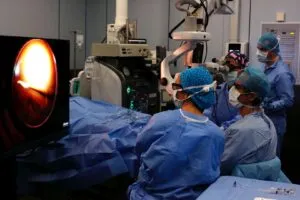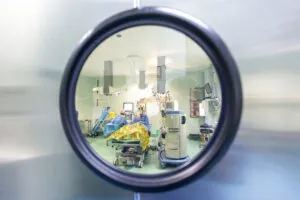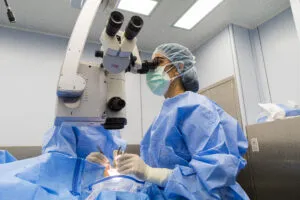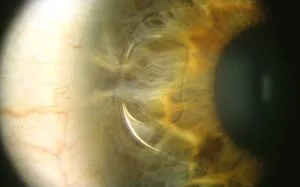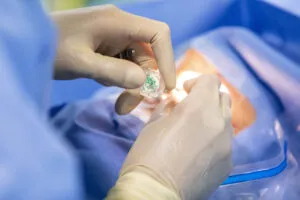Eye diseases
High myopia
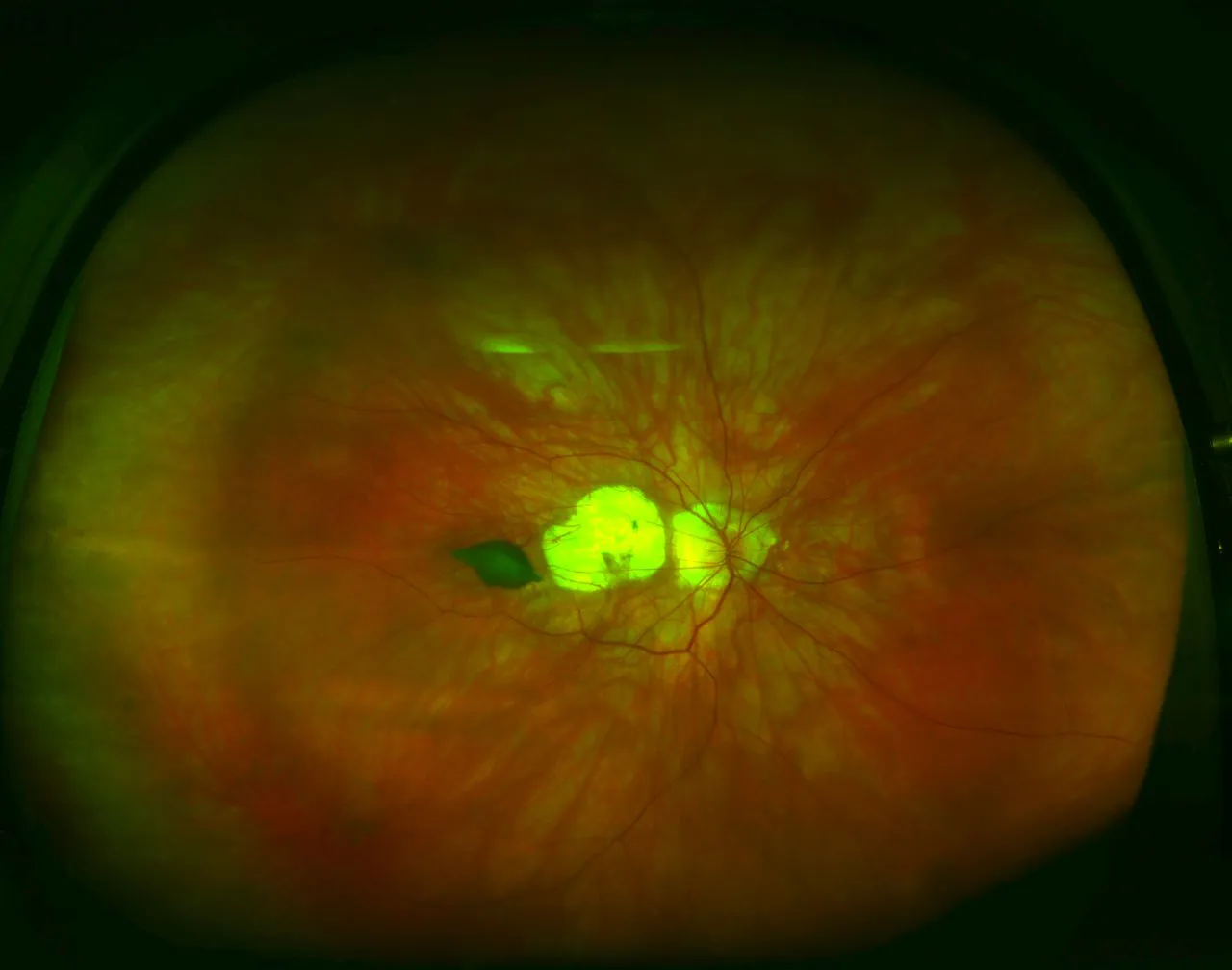
What is high myopia?
High myopia, also known as myopia magna or pathological myopia, occurs if you have more than 6-8 dioptres. It is much less frequent than simple myopia (link) and, beyond the focusing problem it entails, it can trigger different types of eye complications. This is due to the greater elongation of the myopic eye, which, in the case of high myopia, can exceed 28 millimetres. As a result of this excessive growth of the eyeball – which usually begins in childhood and continues into adulthood –, the inner layers of the eye, such as the retina, are stretched and become increasingly thin and fragile.
Thus, if you have high myopia, it is very important that you see the ophthalmologist on a regular basis, both to follow the evolution of the refractive defect and provide you with the appropriate correction, as well as to detect and treat associated eye injuries and damage early
Symptoms
Causes and risk factors
Treatment
The higher the number of dioptres, the blurrier your distance vision will be. In addition, some of the complications that can be triggered by high myopia in the fundus can cause different visual symptoms that should not be overlooked and need to be checked.





